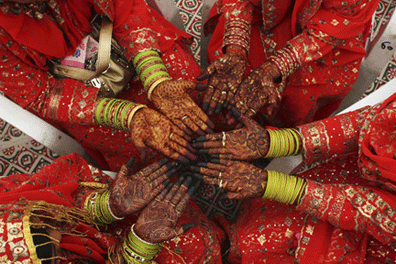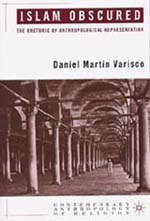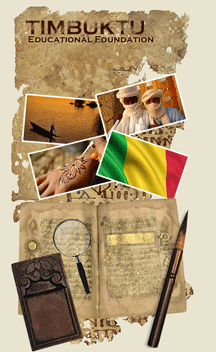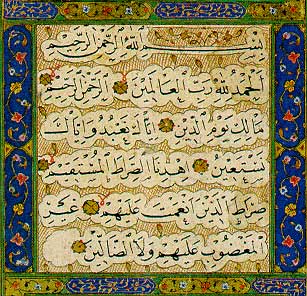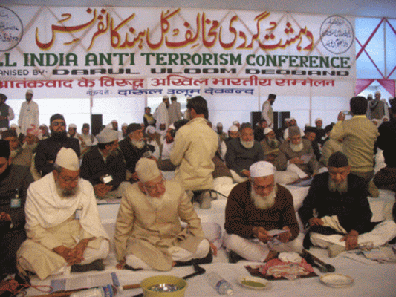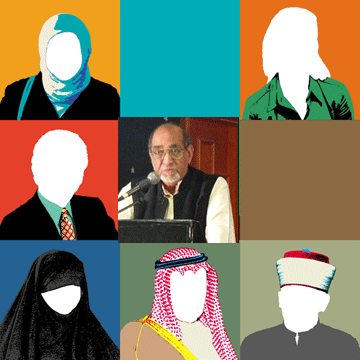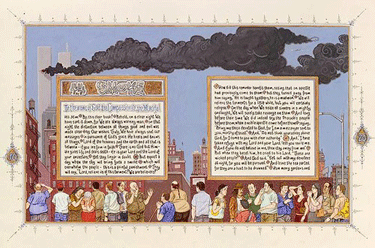
TERROR: “Sura 44 (A–B)” shows the towers of the World Trade Center on Sept. 11. (Sandow Birk / Catharine Clark Gallery / March 26)
Long Beach artist’s illustrations of a new take on Koran
Sandow Birk’s ‘American Qur’an,’ heading to San Francisco and Culver City galleries, breaks away from Islamic tradition to examine the faith through contemporary images.
By Sharon Mizota, The Los Angeles Times, August 23, 2009
There’s a long tradition of illustrating scenes from the Bible — even a version of Genesis by alternative comics master R. Crumb. But the Koran, which Muslims consider to be the holy word of God, has never incorporated images of people or animals, according to Linda Komaroff, curator of Islamic art at the Los Angeles County Museum of Art.
“It simply wasn’t the kind of thing that would come up,” she said, “In Islam, like Judaism, there’s one invisible god that’s everywhere, that can’t be seen and can’t even be comprehended.” As a result, there was no need to develop figurative imagery for religious purposes. The Koran, said Komaroff, is regularly decorated with geometric or vegetal patterns, but she has seen only one example that contains more representational imagery. It depicts the facade of a mosque.
Now, Long Beach artist Sandow Birk has challenged that centuries-old tradition. His series of works on paper, “American Qur’an,” is an English-language version of the central text of Islam, illustrated with scenes from contemporary American life. Selections from the project, which is ongoing and will eventually include over 300 pages, will be on view at Catharine Clark Gallery in San Francisco starting Sept. 5 and at Koplin Del Rio gallery in Culver City as of Sept. 8. Continue reading Picturing the Quran

